Updated on: Nov 25, 2024
Planning an accurate wedding processional is crucial if you want to honor your family and wedding party members during the ceremony. However, planning a wedding is nerve-racking enough without having to worry about the order of your wedding processional! Luckily, we’ve done the research for you! This comprehensive list explains what the wedding processional order is for a variety of cultures, religious denominations, and sexual orientations. Find the order that suits you below and be sure to download our wedding checklist and budget to ensure you have everything put together for the big day!
Christian Wedding Processional Order
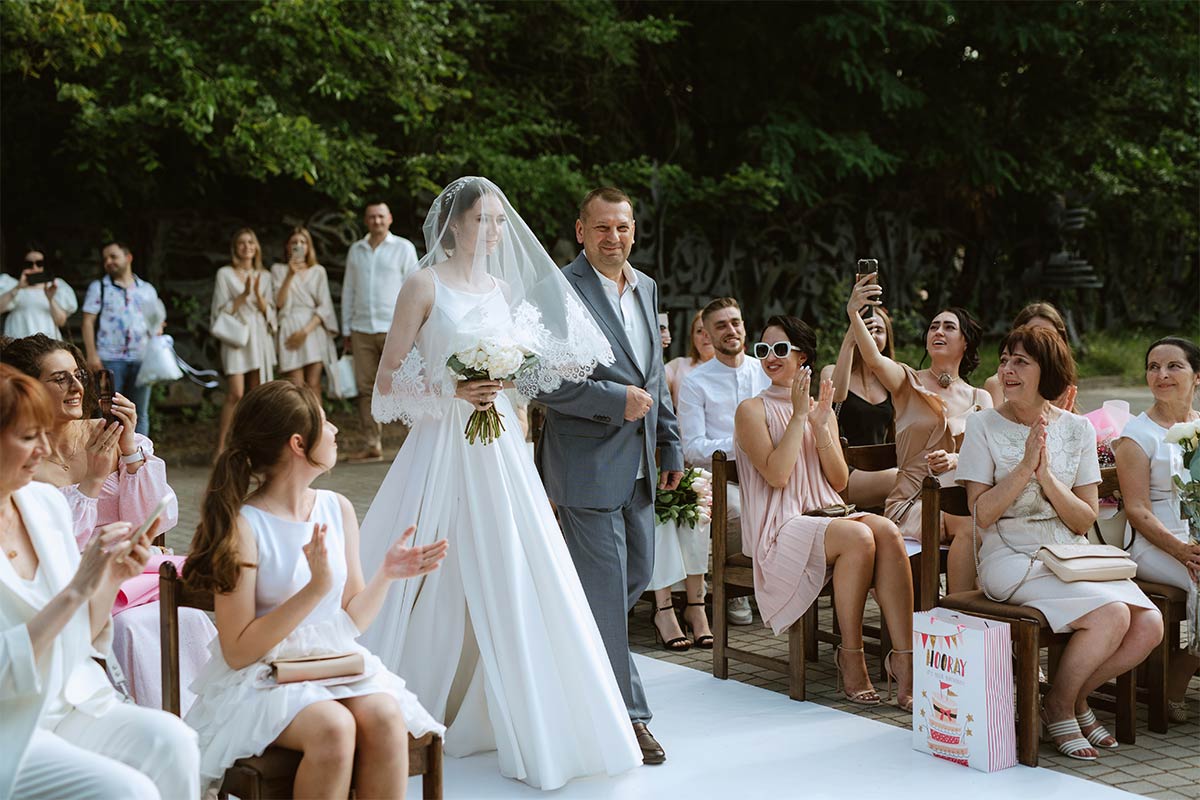
1. Groom’s Parents
The groom’s parents walk down the aisle first. Though the wedding processional doesn’t technically start until the officiant walks down the aisle, having the groom’s parents walk the aisle after all guests are seated is a good way to honor them. They may then be seated on the right side of the first row.
2. Mother of the Bride
The mother of the bride may walk the aisle alone or escorted by her son, son-in-law, or any other family member. After she walks the aisle she is seated in the first row on the left.
3. Officiant
The wedding processional officially begins as the officiant walks down the aisle and takes his position in front of the altar.
4. Groom
The groom will most often walk the aisle solo, but some choose to be escorted by both of their parents. Another option is entering the ceremony through a side door and walking up to the right side of the altar.
5. Best Man
The best man will enter just as the groom does – either through a side door or walking down the aisle solo and assuming his position next to the groom on the right. The best man can also hold the wedding ring box in case the ring bearer is too young to be trusted with the task.
6. Groomsmen
Groomsmen follow immediately after the groom and may walk alone or in pairs. The first groom to walk the aisle should fill the position farthest from the groom on the right side. Forming a diagonal line when lining up will allow for all groomsmen to have a good view of the ceremony.
7. Bridesmaids
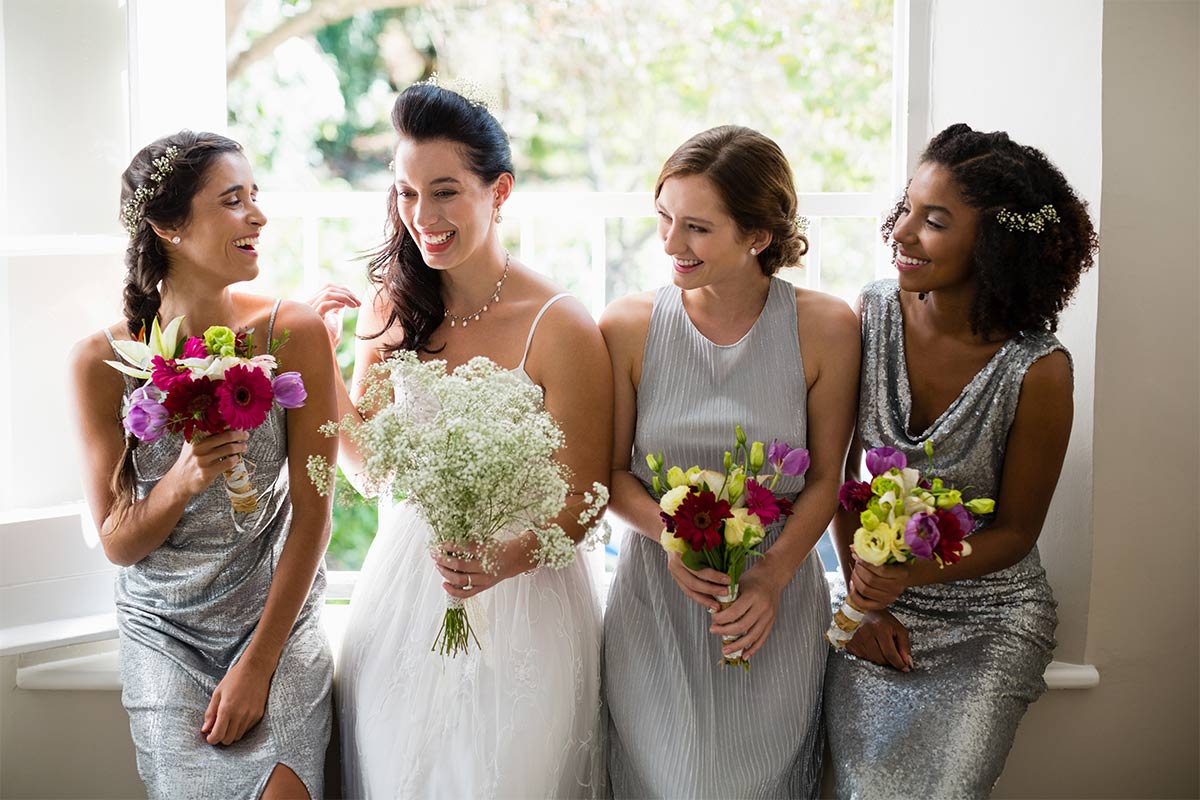
Bridesmaids may also walk down the aisle alone or in pairs. The first bridesmaid should fill the farthest position from the bride on the left side, and others should follow suit. The bridesmaids may also form a diagonal line while standing next to each other, so each is able to watch the ceremony.
8. Maid or Matron of Honor
The maid or matron of honor will make a final check before walking the aisle. After she ensures that the bride is ready for her big moment, the maid or matron of honor will walk the aisle and assume her position next to the bridesmaids and closest to the bride.
9. Ring Bearer
The ring bearer can walk the aisle alone or accompanied by the flower girl – it all depends on preference. If there are any concerns as to whether the ring bearer is too young to be trusted with the real wedding rings, having him carry decoys is a good option! In this case, the best man should be given the real rings before the start of the ceremony. The ring bearer may be seated with his parents after walking down the aisle.
10. Flower Girl
The flower girl either walks the aisle alone or together with the ring bearer. In each case, she scatters flower petals from her basket or bouquet across the aisle in preparation for the bride. After walking the aisle, she is seated with her parents.
11. Bride and Father of the Bride
The bride is escorted down the aisle with her father on her right side. Once they reach the end of the aisle, the father may lift the bride’s veil and kiss her on the cheek, after which he takes his seat in the first row to the left next to the bride’s mother. The bride may then hand the bridal bouquet to her maid or matron of honor so her hands are free during the ceremony.
Catholic Wedding Processional Order

Even though Catholicism is a branch of the Christian religion, there are some slight differences to the order of the wedding processional, such as the Catholic tradition of the groom entering the ceremony from a side entrance. Learn more about the exact order of traditional Catholic wedding processionals below!
1. Priest
The priest enters the ceremony from the side of the venue and takes his center position in front of the altar.
2. Groom
The groom comes in from the side entrance and takes his position on the right side in front of the altar.
3. Best Man
The best man also walks to the aisle from the side entrance and stands next to the groom on his right side.
4. Bridesmaids and Groomsmen
Per Catholic tradition, bridesmaids and groomsmen walk down the aisle in pairs – groomsmen on the right side, and bridesmaids on the left. The first pair to walk down the aisle should be the pair that will stand farthest from each side of the bride and groom. Forming a diagonal line when positioning bridesmaids and groomsmen allows them to have a clear view of the couple during the ceremony.
5. Maid/Matron of Honor
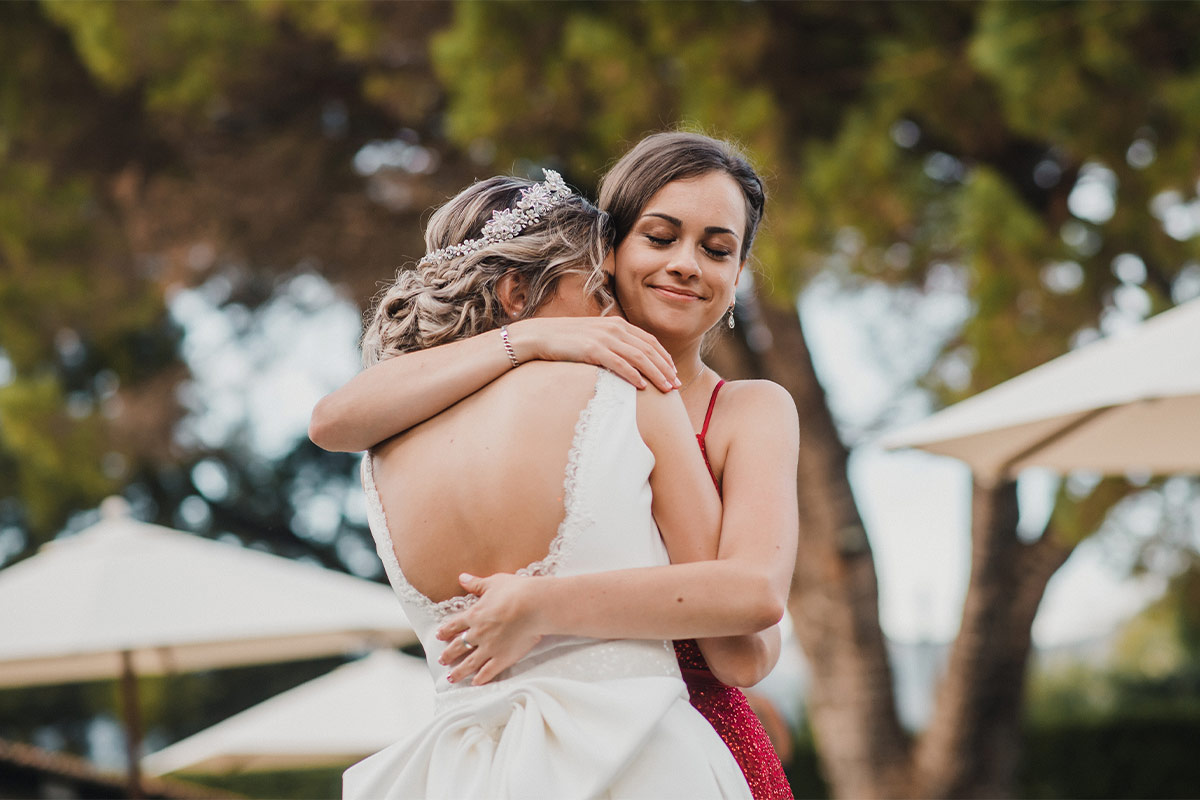
After checking the bride’s dress, veil, and makeup, the maid or matron of honor walks the aisle and stands on the left side next to the bride. Once the bride reaches the altar, the maid/matron of honor may take her bouquet so the bride has her hands free during the ceremony.
6. Ring Bearer
The ring bearer may walk the aisle together with the flower girl or they may each walk alone. If the ring bearer is too young to be trusted with the real rings, he can carry decoy rings attached to a ring bearer pillow, and the best man can have the real rings on his person. The ring bearer will sit with his parents after reaching the end of the aisle.
7. Flower Girl
The flower girl can accompany the ring bearer walking down the aisle or she can walk alone as she tosses the petals from her basket. She may sit with her parents afterward.
8. Bride and Father of the Bride
The bride’s father should stand to his daughter’s right side as he escorts her down the aisle. Once they reach the end of the aisle, the bride may hand her bouquet to her maid of honor and approach the priest and her soon-to-be husband and at the altar, and the father can take his seat in the first row on the left.
Jewish Wedding Processional Order

Jewish wedding tradition is known for incorporating extended family into the ceremony, starting with the couple’s grandparents’ walking down the aisle, as well the parents’ positioning next to the bride and groom under the chuppah. A chuppah, which is a wedding canopy made of cloth and 4 poles, symbolizes a Jewish home.
1. Rabbi or Cantor
The Rabbi or Cantor initiates the processional by either walking down the aisle or walking to the center of the chuppah from a side entrance.
2. Grandparents
The bride’s grandparents are the first family members to walk down the aisle after which they are seated in the first row on the right, followed by the groom’s grandparents who are then seated in the first row on the left.
3. Groomsmen
The groomsmen walk down the aisle in pairs and take their place to the left of the chuppah, starting from the farthest position from the groom and filling the closest position to the groom last. Ideally, groomsmen will form a diagonal line, so each has a good view of the couple.
4. Best Man
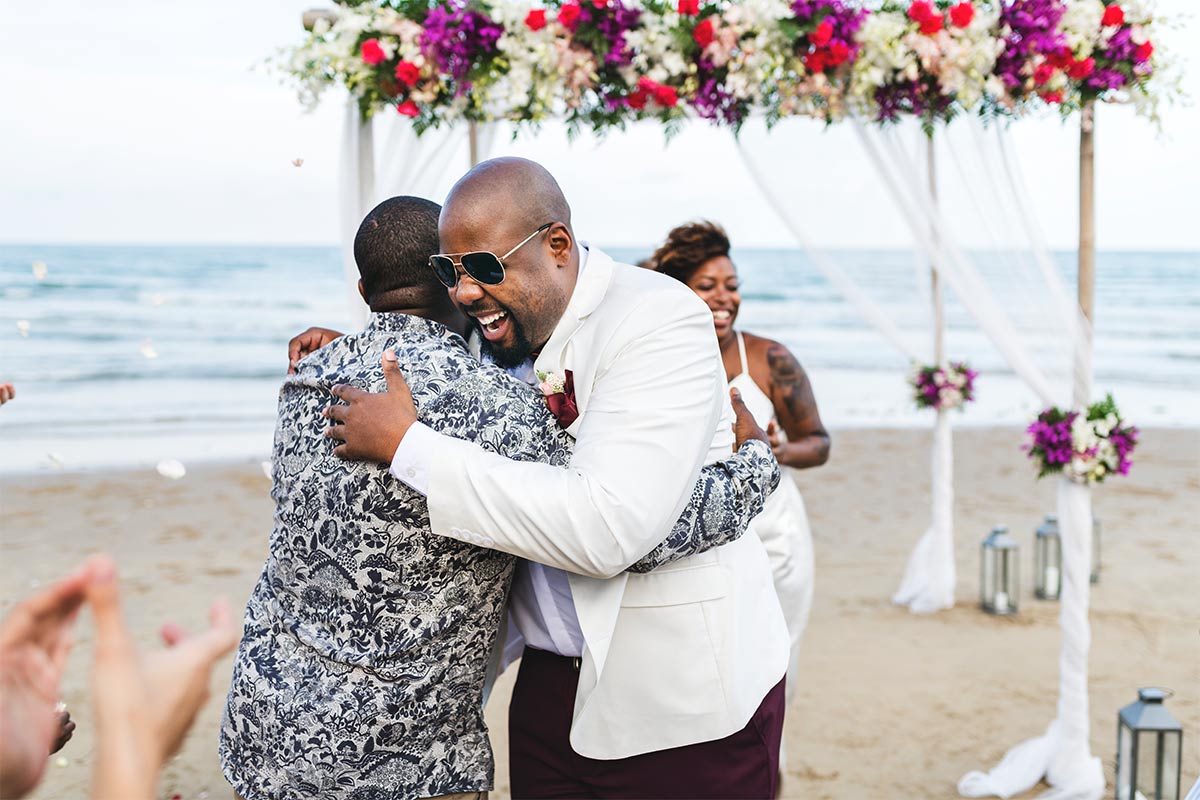
The best man walks down the aisle alone and takes his position alongside the groomsmen in the position closest to the chuppah.
5. Groom and Parents
The groom walks down the aisle with his parents on each side – father to his left and mother to his right.
6. Bridesmaids
The bridesmaids may walk down the aisle one by one or in pairs. Following the same pattern as groomsmen, the first bridesmaid will take the position farthest from the chuppah on the right side, the second bridesmaid will stand in the next position closer to the chuppah, and so on. The last place closest to the chuppah will be reserved for the maid or matron of honor. Bridesmaids should also form a diagonal line when assuming their positions, so each has a good view of the ceremony.
7. Maid or Matron of Honor
Before walking down the aisle, the maid or matron of honor will make a last final check of the bride’s hair, dress, makeup, and veil. Once she has ensured everything is in order, the maid or matron of honor will walk the aisle alone and assume her position closest to the chuppah next to the bridesmaids. She may also hold the bride’s bouquet during the ceremony.
8. Ring Bearer
The ring bearer may walk the aisle alone or accompanied by the flower girl.
9. Flower Girl
The flower girl can walk the aisle alone after the ring bearer or the two can walk together. After the children walk the aisle, they are seated with their parents.
10. Bride and Parents
The long-awaited bride walks the aisle together with her parents – father on her left side and mother on her right. Per Jewish tradition, the bride’s parents take their position next to the bride under the chuppah. Before she takes her position next to the groom under the chuppah, the bride may hand her bouquet to her maid of honor to hold for the duration of the ceremony.
Hindu Wedding Processional Order
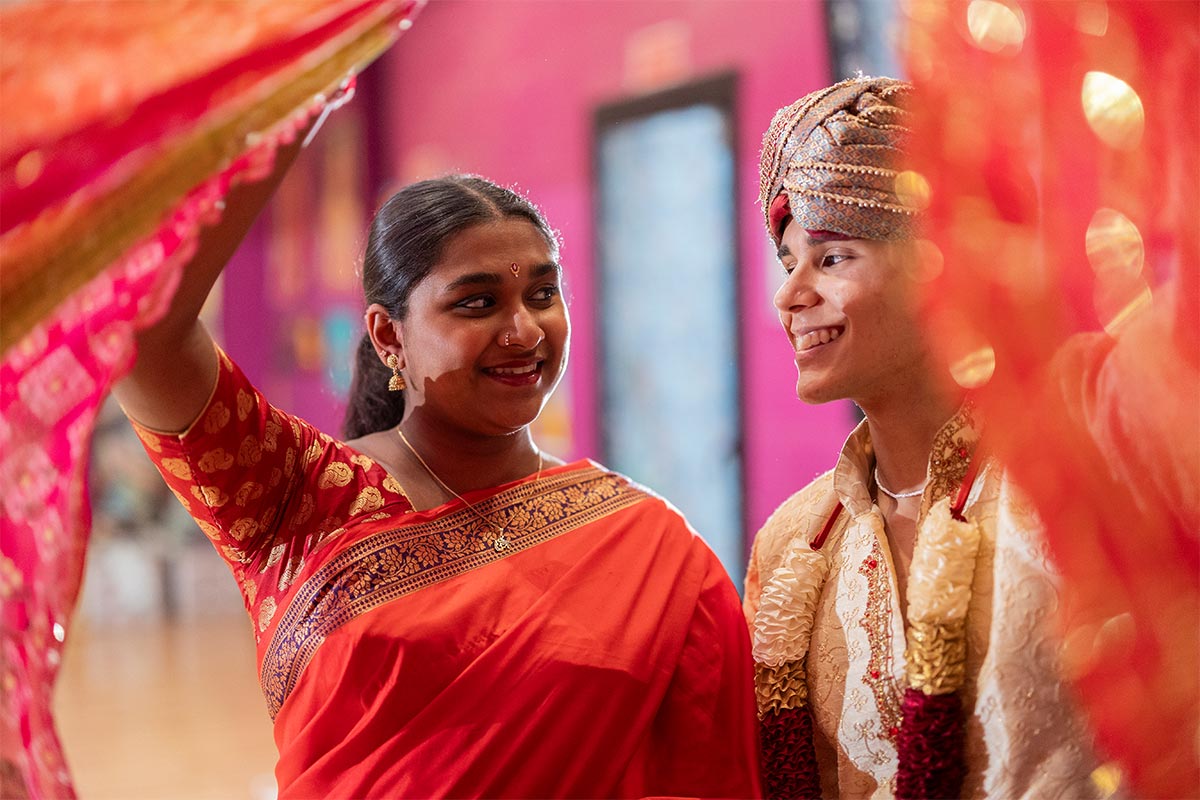
Hindu wedding processionals are some of the most exciting you’ll ever see! Starting with the cheerful baraat (also known as vara yatra) which you can learn more about below, a Hindu wedding processional is a sacred yet thrilling event – culminating in the reveal of the beautiful bride in red!
1. Bride’s Parents
The bride’s parents are the first to enter the ceremony venue where they wait for the arrival of the groom and his family.
2. Groom and Family
The wedding processional officially begins with a baraat or vara yatra – an Indian celebration in which the groom is seated on a white ceremonial horse and surrounded by his family who dances, sings, and cheers his way into the ceremony site.
The groom and his family’s entrance is welcomed with a rice toss after which the groom’s parents exchange gifts with the bride’s parents. The groom is given a flower garland and an arati – a plate holding a lit lamp that symbolizes an unflinching love for God.
After the groom’s family is welcomed and the exchanges have been made, the bride’s family escorts the groom and his parents to the mandap – a canopy under which the ceremony takes place.
3. Bride and Bridal Party
The bride enters the room surrounded by her extended family and friends. The bridal party will walk to try to hide the bride and prepare the rest of the guests for the big reveal. The bride will then walk down the aisle and exchange garlands with the groom once she reaches the mandap. The exchanging of garlands symbolizes the couple’s acceptance of each other into their lives.
Non-Denominational Wedding Processional Order
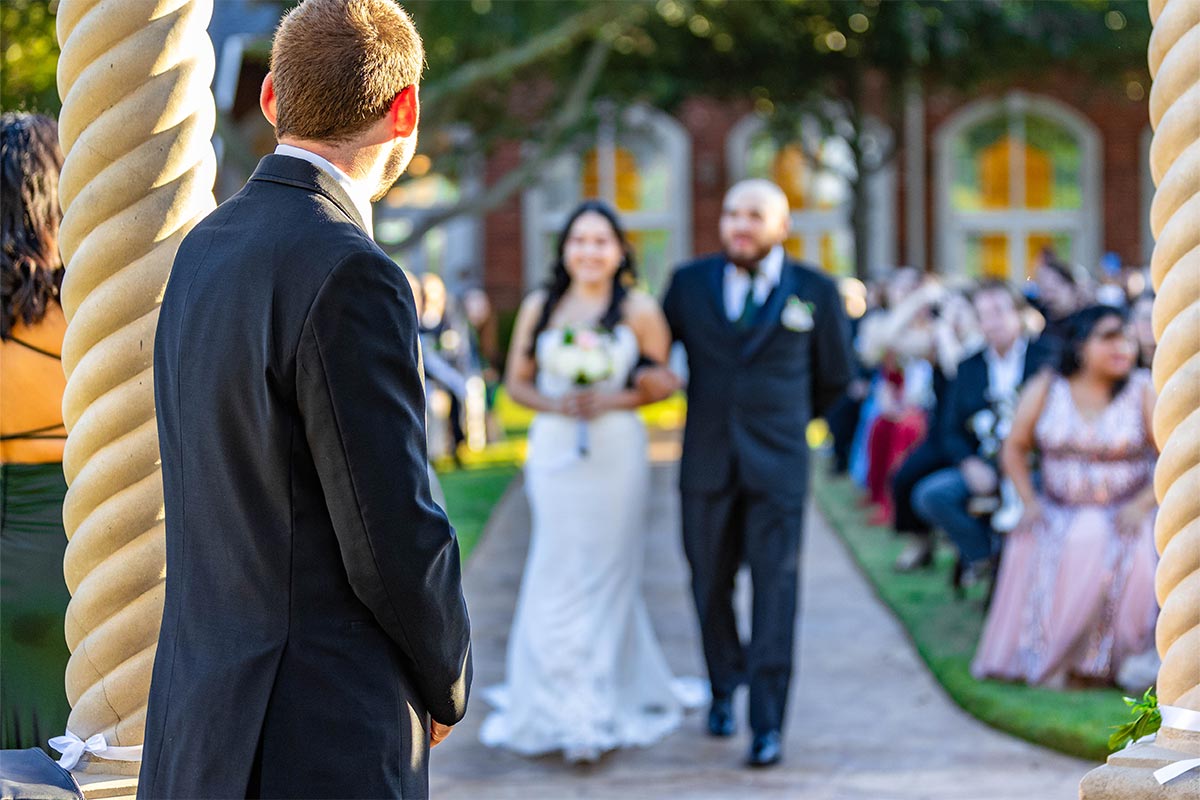
Non-denominational wedding processionals enjoy all the freedom wedding planners could wish for! The couple can customize the order and style of the processional to their liking, but if you’re on the lookout for ideas, the following is a common processional order you can follow.
1. Officiant
In a non-denominational wedding processional, the couple has the freedom to choose anyone to be their officiant – be it a friend or family member. The officiant assuming his position in front of the altar officially starts the wedding processional.
2. Grandparents
If the you have grandparents attending, show them some love and let them be the first family members walk down the aisle to their seats.
3. Groom's Parents
Since the groom usually does not walk down with his parents, the parents will walk behind the grandparents to their seats.
4. Bride's Mother
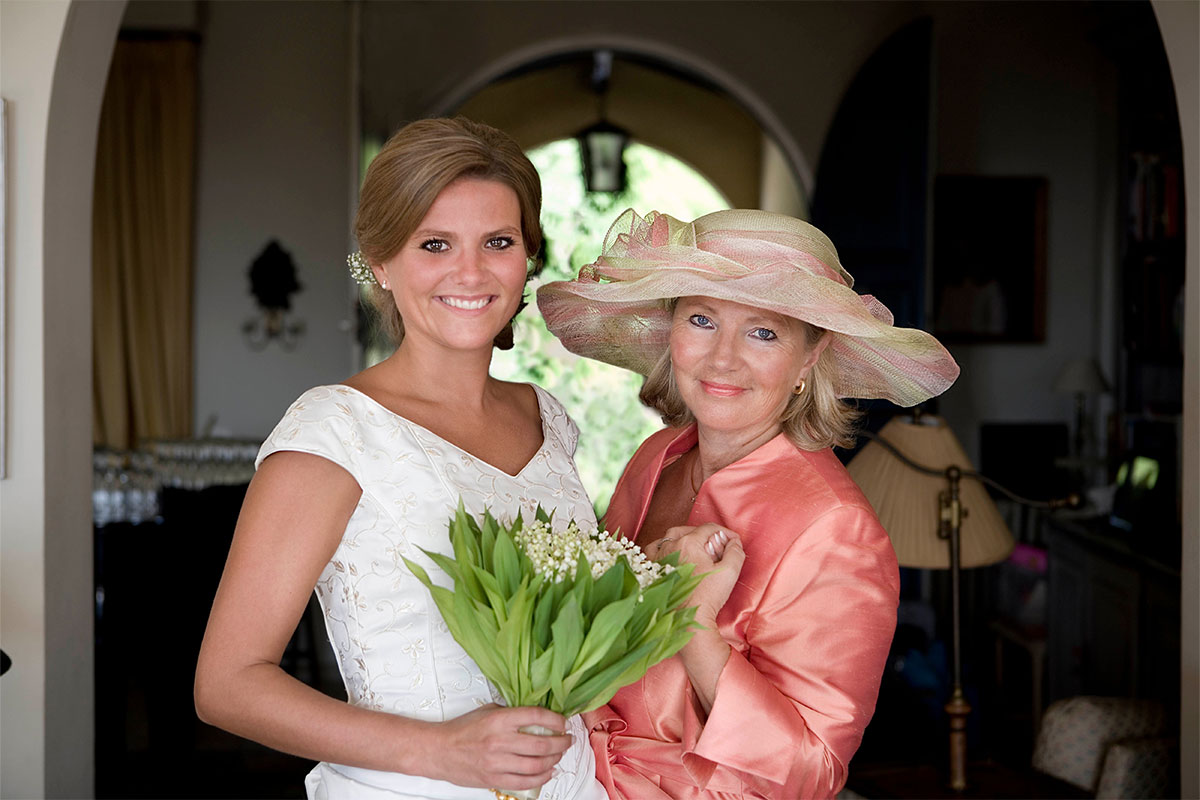
If the bride decides to have her father walk her down the aisle, the bide's mother will walk down the aisle alone. When she takes her seat, it's usually a sign to the guests that the ceremony will begin soon.
5. Groom
The groom can decide whether he wants to walk down the aisle during the wedding processional or if he prefers to already be standing at the altar with his groomsmen when it starts.
6. Best Man
The best man will do the same as the groom – if the groom decides to already be at the altar when the processional stars, the best man will be standing next to him. If the groom decides to walk down the aisle, the best man will follow right after.
7. Bridesmaids and Groomsmen
The bridesmaids and groomsmen walk down the aisle in pairs. The first pair to walk down the aisle should be the bridesmaid and groomsman who will be standing farthest from the couple, and each position closer to the couple should be filled consecutively after.
8. Maid or Matron of Honor
The maid or matron of honor walks the aisle alone after which she takes her position next to the bride.
9. Ring Bearer
The ring bearer also walks the aisle alone and is seated with his parents after handing the rings off to the best man.
10. Flower Girl
The flower girl walks down the aisle solo while throwing petals from her bouquet down the aisle to prepare for the bride’s entrance. The flower girl will sit next to her parents once she reaches the end of the aisle.
11. Bride
The bride can choose to walk the aisle alone or be escorted by one or two parents. She may also choose to meet her parents halfway down the aisle.
Same-Sex Wedding Processional Order

Same-sex wedding processionals may divide sides by partners, e.g. Partner A’s guests and wedding party may take the right side, and Partner B’s may take the left. Alternatively, more and more couples are opting for two aisles, which allows both partners to walk down the aisle at the same time.
1. Officiant
It is up to the couple how they would like their officiant to enter – either by walking down the aisle or coming in through a side entrance and approaching the middle of the altar.
2. Wedding Party
Both partner’s wedding party members walk down the aisle in pairs, with Partner A’s wedding party member standing on the right, and Partner B’s wedding party members standing on the left. Party members should stand diagonally next to the altar so that they may see the soon-to-be husband and wife for the duration of the ceremony.
3. Best People
Partner A’s Best Person walks the aisle on the right side paired with Partner B’s Best Person on the left. If the couple wishes to do so, each partner’s Best Person may walk the aisle alone. After walking the aisle, the Best People will each take their position next to the Partner that chose them as their most trusted confidant on the big day!
4. Ring Bearer and Flower Girl
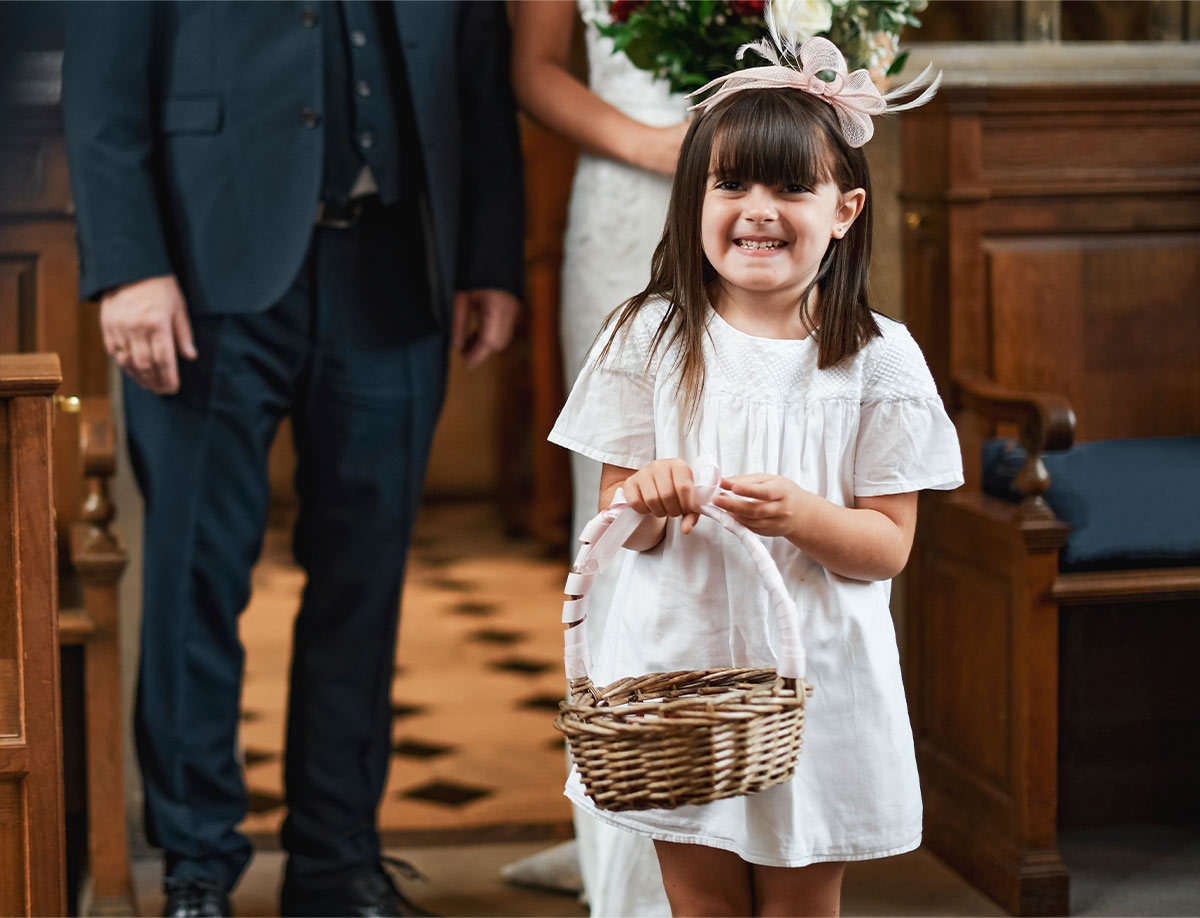
The ring bearer and flower girl may walk together or separate, after which they are seated with their parents.
5. Partner A and Partner A’s Parents
Partner A may walk down the aisle escorted by their parent(s) or alone. Once they reach the altar, Partner A should take their position at the left side of the altar.
6. Partner B and Partner B’s Parents
Partner B follows suit after partner A – they may walk accompanied by their parent(s) or solo. They then take their position on the right side of the altar. If the couple opts for a two-aisle venue, both partners walk down the aisle at the same time on their corresponding sides.
Wedding Processional: Conclusion
A couple’s wedding day is the happiest day of their lives, and getting to share it with loved ones is what makes it even more valuable. Incorporating the right wedding processional order ensures that all close family members and wedding party members are suitably honored and the stage is properly set for the grand event – the arrival of the bride!
Make sure to check out our wedding ideas to help you plan your wedding flowers and ceremony. This day should be super special no matter how you celebrate so let us help you make it easier.
Written by Ana Fabijanić




